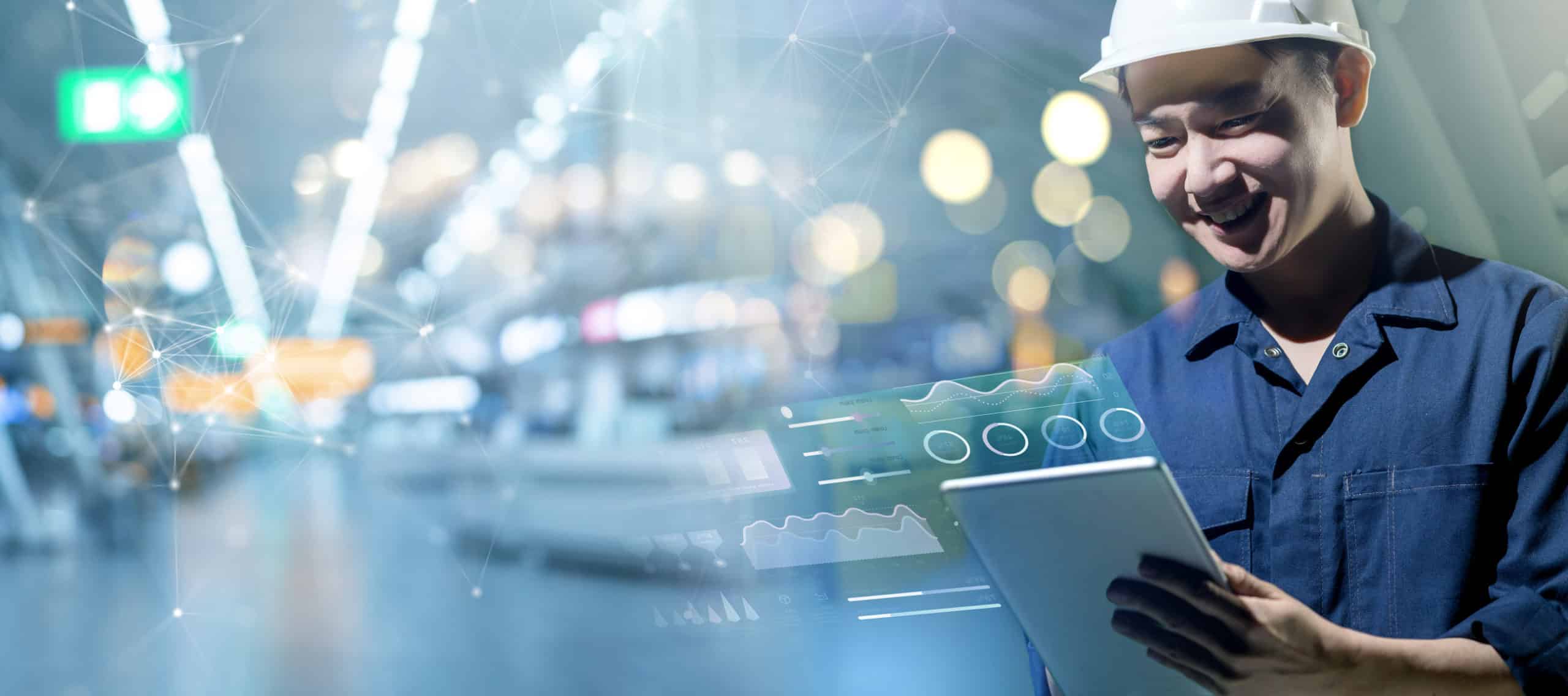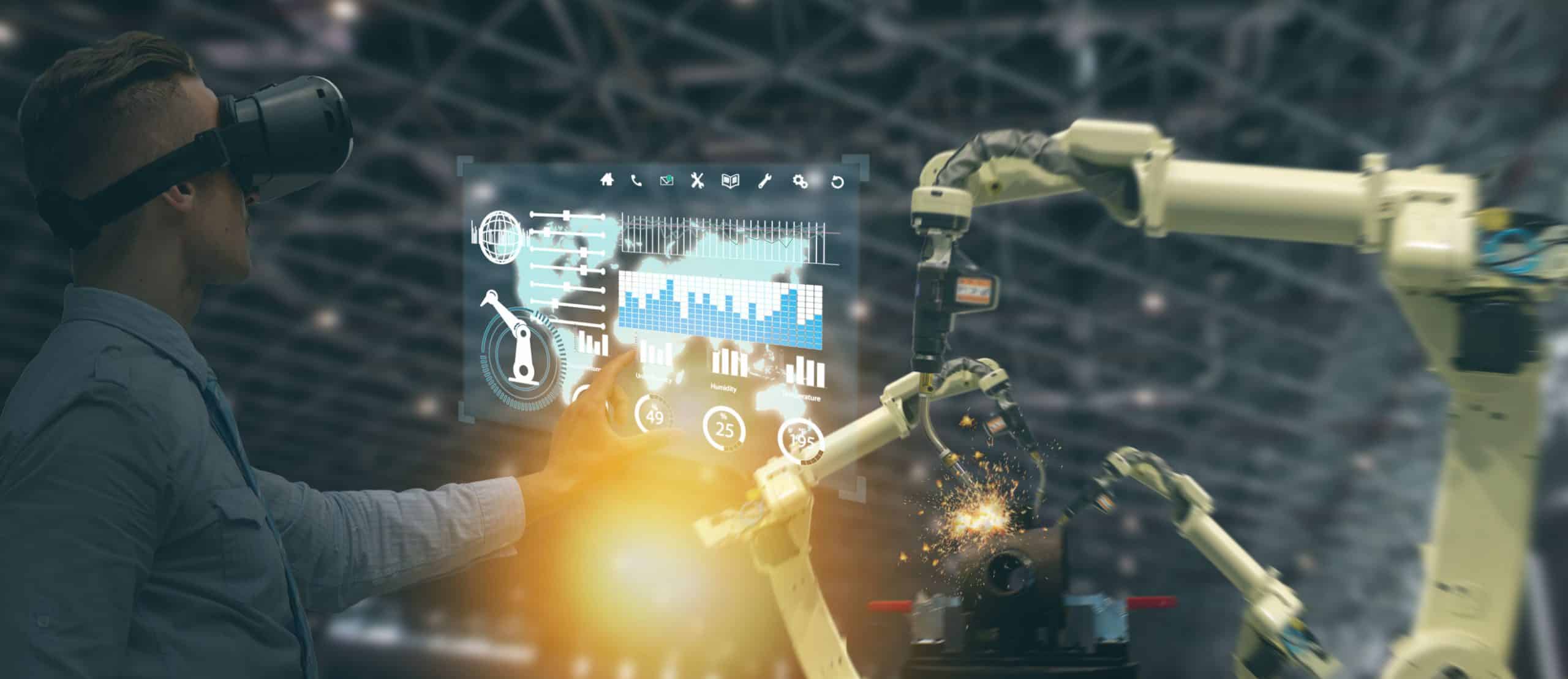When performing maintenance on complex industrial equipment, it helps to have a manual or instructions close at hand. By illustrating what needs doing and where, diagrams and annotated pictures help get the job done faster while avoiding mistakes. The downside is that paperwork tends to get dirty, lost or mislaid and can be hard to follow. This is why it pays to use augmented reality in machine maintenance.
Understanding augmented reality
Augmented reality — or AR — is a form of technology where computer-generated graphics and notes are overlaid on the real-world video. Imagine viewing a scene on a phone or tablet in live video mode, then picture explanatory notes and graphics pasted over the top – that’s AR. For activities where both hands are needed, AR can be delivered through suitably equipped glasses or special goggles. The display hardware requires a camera to capture live video and access to computing resources that create context-specific graphic imagery.
Augmented reality for maintenance activities
Many industries are using augmented reality for equipment maintenance and repair. To utilize augmented reality for industrial maintenance, a technician aims the camera at a machine, electrical wiring or plumbing and the system displays relevant notes on the screen. On-screen arrows indicate the items to which the notes refer. With this technology, a technician can identify the problem area more quickly. He or she knows which pipe or wire is which, which drive controls which motor, and so on. The system could tell him or her what replacement parts are needed and even whether they are in the storeroom.
For servicing work, AR can guide the technician through what needs doing, in the preferred sequence. For example, it might start with removing covers and guards and then proceed to filter replacement and checking drain ports. AR is a valuable tool for supporting the adoption of predictive maintenance strategies.
When taking readings of parameters such as temperature and vibration, the system can call up historical data and let the technician see if there has been any significant drift. It can also be used for capturing records of visual inspections and servicing. Using video with audio, it is possible to enlist remote support from off-site experts. This could let a specialist guide the technician through a complex task or help diagnose a problem. It is also a way of training people unfamiliar with particular pieces of equipment and can even be used to document installation and servicing procedures.
How augmented reality can benefit operations

With augmented reality, industrial maintenance can be performed faster and with fewer errors. That reduces mean time to repair, improves equipment availability and reduces unplanned downtime.
Specific benefits include:
- Faster problem diagnosis, with less time spent identifying relevant components and referring to diagrams
- Faster servicing and repair work
- Consistent servicing performance, regardless of who does it
- Less reliance on the experience of individual technicians
- Fewer errors in installation or servicing
- No need for experts to travel to a location, saving time and travel costs
- Enhanced training for new technicians
- Improved safety
- Real-time remote assistance
Some benefits extend beyond direct operational improvements. The maintenance function is a key resource in almost every industrial enterprise, but it faces two major challenges. First, modern production machinery is increasingly sophisticated with advanced controls and sensors, networking functions, and need for programming. Second, it is becoming harder to retain and recruit specialists with in-depth expertise in the necessary skills.
Augmented reality in maintenance can help manage technical workforce challenges by enabling technicians to work on equipment with which they are unfamiliar. It can guide those less experienced through troubleshooting, repair and servicing tasks, supported by off-site experts as needed. It also delivers on-the-job training by explaining what each piece of equipment is and how it relates to other parts of a system.
Trends in AR for maintenance
As AR continues to expand into more areas of industrial maintenance, it has the potential to bring some significant changes, including:
- Augmented reality in predictive maintenance: Integrating AR into predictive maintenance means technicians will be able to see real-time data and alerts pertaining to machine health through their interfaces. This means they will be able to act quickly to prevent unexpected failures.
- Enhanced remote assistance: In the future, it is expected that AR systems will offer advanced remote assistance capabilities. This means technicians could be guided in real-time by experts located anywhere in the world with the help of augmented reality for remote maintenance.
- Wearable AR devices: As wearable AR devices become more sophisticated, hands-free maintenance will become more efficient. Devices such as industrial AR glasses can deliver data instantly including overlays, schematics and step-by-step instructions.
- Augmented reality training: One of the primary uses of augmented reality is maintenance training. By creating immersive and interactive training environments as part of technician training, trainees will be better prepared to jump right into the real world and experience faster onboarding.
Integrating AR with other Industry 4.0 technologies
AR has the potential to enhance a wide range of Industry 4.0 technologies that have either already been adopted by the manufacturing sector or soon will be, including:
- Digital twins: Digital twinning replicates the form and function of a physical component or product in a virtual environment. AR enhances this by allowing a technician to interact with these digital twins the same way they would something in the real world. Through the use of digital twins in manufacturing, maintenance technicians gain the ability to test fitting parts together and other tasks without having to take a machine offline and other benefits.
- AI and machine learning: Advanced algorithms can enhance AR by providing suggestions for maintenance based on predictive analytics. These AI systems can predict and diagnose issues before they happen as well as optimize maintenance schedules.
Maintenance solutions from ATS
Every industry struggles to keep equipment running at optimal efficiency, and the growing sophistication of the latest generation machinery only compounds the problem. Effective maintenance is essential to eliminate unplanned downtime and maximize performance and availability. Many businesses struggle to find the time or the resources to care for assets the way they need, which is where ATS can help.
To learn more about how maintenance solutions from ATS can help industrial operations maximize performance and efficiency, contact us to schedule a discussion.






